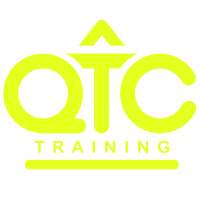Custom Corporate Training
If your organisation is are looking for custom training to reach your strategic goals faster and reach your Key Performance Indications (KPIs), a corporate training solution may be right for you. Or you may find that training on the market is too generic and want some targeted Australian training. Our experienced Instructional Designers and Project Leads will work with you through each stage of the ADDIE process:
Analysis
Before building a training solution, it is important that we understand what your requirements are. We will conduct a formal Learning Needs Analysis where we analyse any documentation you have available, and meet with you to undertake a workshop.
Our analysis process is aligned with the Action Mapping approach advocated by Cathy Moore. We start by defining the goal you want to achieve, and then work backwards to determine the best training solution.
We might start by asking you questions like:
- What are you trying to change by undertaking training?
- What challenges are you encountering in your business?
- What Key Performance Indicators do you want to improve?
- How do you measure success in your organisation?
Once the analysis phase is complete, we can then design a solution that is right for your needs.
GOAL
What is the business goal or problem?
BEHAVIOUR
What behaviours must occur to reach the goal?
ACTION
What activities can we can make people do to built these behaviours?
INFO
What knowledge we need to give to complete the activities?
Design
In this stage we will use the outputs of the Learning Needs Analysis process to create a Solution Design. This is a document that gives our recommendation for the best training solution to address your stated goal.
Our designs are often aligned with the 70:20:10 model, which suggests that learning can occur in different ways:
- Around 70% of learning happens on the job through lived experience
- Around 20% of learning comes from working with others
- Around 10% of learning comes from formal training like courses and seminars
This means that the best way to approach a training solution is to set up opportunities for your people to practice real-world skills in the workplace, or in an accurate simulated environment. There is also benefit in partnering them with more experienced experts such as coaches or mentors. Formal training does have its place. But it is only one part of the overall learning solution.
We have extensive experience working in industries with high safety risk such as rail, and infrastructure. We can collaborate closely with Human Factors specialists to consider inputs such as Risk Based Training Needs Analysis (RBTNA). We can also align with competency frameworks and support ongoing competency assessment.
Development
After we agree on the solution design, our team of experienced adult learning professionals will develop the training solution.
For formal training this might be workshops, seminars, webinars, master classes, eLearning modules, micro-learning, explainer videos, and interactive help files.
To encourage learning from others, we may structure opportunities for coaching, mentoring, shadowing, 360 degree feedback, chatrooms, or group projects.
For on-the-job learning we may develop logbooks, digital diaries, scenarios, simulations, or competency frameworks.
We always plan for at least two review rounds so that you can make sure the training materials are right for your needs.
We are also beginning to explore the ways generative Artificial Intelligence (AI) can be leveraged in training to provide ongoing support to learners.
Implementation (deployment)
Once the training solution is build, we can support an initial pilot and then support ongoing deployment.
We have a Learning Management System (LMS) available for use, or can work with the LMS within you organisation.
Our experienced Trainers and Assessors can support classroom based and online training interventions. All Trainers have the current Certificate IV In Training and Assessment (TAE40122).
We can track training completion through our LMS or yours, and can provide regular status reports.
Evaluation
In the Analysis phase, we will have worked with you define a business goal that you were trying to achieve, and to define how you would measure your progress towards that goal. In the Evaluation stage, we revisit those measures to see if the training intervention has been successful. We document the results of the evaluation in an Evaluation Report.
We evaluate in line with the Kirkpatrick Model of Training Evaluation. This means that we consider:
- Level 1 – Reaction
Did the training participants enjoy the training? Did they find it relevant? - Level 2 – Learning
Did the training participants learn something new? Have they increased knowledge? Have they mastered a new skill? Have they improved in attitude or increased in confidence? - Level 3 – Behaviour
Is the increased learning translating to a difference in the way the participants behave on the job? Are they doing something differently? Can their managers and peers notice a change? - Level 4 – Results
Is there a shift in the Key Performance Indicators of the business? Is the business goal closer to being achieved? Have the problems noticed previously reduced?
Based on the results of the evaluation, we will recommend ways that the existing training intervention can be improved, or suggest what the next intervention may be.
